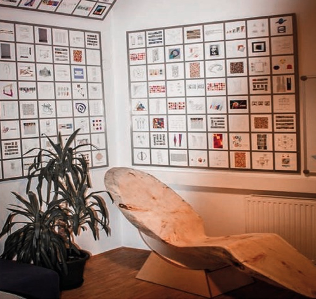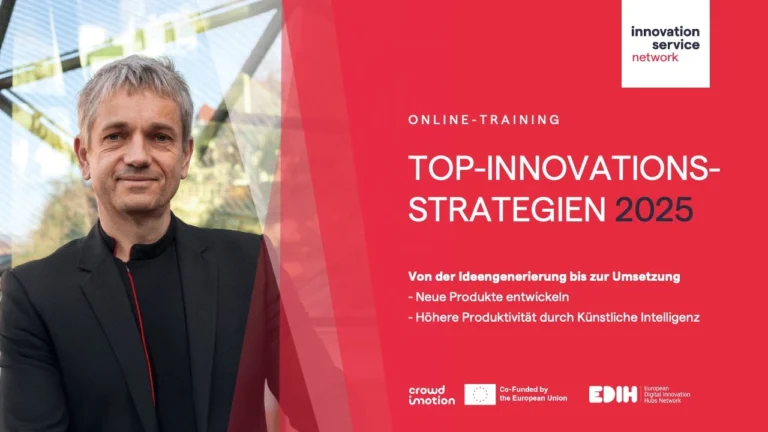

In 10 steps to an innovative company
"You should never be so busy that you don't have time to think."
Georg Christoph Lichtenberg, 1742-1799
Creative thinking work certainly had a different status in Lichtenberg's time than it does today, but he too already addressed "time" as an important resource. In companies today, it is more important than ever to think about the future and to deal with idea development, idea selection and their implementation.
Reality shows that everyday work leaves little room for future projects. This starts with quite banal issues such as the question of where employees can book their time when they are working on improvements or ideas for the future? Some companies have already recognized that it is important to create free time for creativity and innovation. From a few hours per week to 10% of working time (in a few cases up to 20%), different arrangements can be observed.
Problem solving requires the ability to break away from the problem and find new ways. Proposals for the continuous improvement process (CIP) are usually created in the immediate working environment in the company and problems are thus solved. In the case of "disruptive innovations", it is much more difficult to break out of the usual paths and to muster the necessary innovative energy. As a result, these often groundbreaking or even disruptive ideas quite rarely originate within the company. However, the leverage of these innovations for future revenues is more important than ever for many industries and increasingly addresses digital tools and platforms to produce business model innovations.
Companies are built to be stable and generate output. The "required instability and reorganization" for innovations is therefore a major hurdle in-house. It can be observed more and more often that breakthrough innovations in an industry are not even created in the company and more and more often not even in the industry concerned! Tesla, for example, set the trends in electric mobility as a "newcomer" without ever having built a car before. This means that many restrictions are removed right from the start, and the enormous freedom enables leaps in innovation that industry insiders find difficult to achieve.

More and more large companies have taken note of the fact that they are too sluggish and too slow for high innovation intensity. They try to get early access to external innovations by observing or scouting startups. If the Mergers & Acquisitions (M&A) department gets involved with this, be careful: Buying majority shares from founders or a startup too early can be the early death of a "young seedling."
In any case, it is recommended that even larger companies continuously develop their internal innovation capabilities. Training, methods and tools help to increase the competencies for this. If the "big innovation" in the form of a startup or inventor is just around the corner, there is otherwise no sufficient capacity to absorb and utilize this external innovation impulse. Some companies solve the lack of space in routine processes through organizational measures: They build their own "incubation centers" at the interface between internal and external, which do not have to adhere to rigid rules and can develop greater innovative power through this greater freedom.
Conclusion: Creative processes are unleashed when you can let your thoughts roam unhindered; this requires free space and, above all, time. A creative working environment promotes innovative strength and, via innovations, ultimately also the competitiveness of the company. There are various options that companies can implement to promote innovation through (more) free space:
Open communication between employees promotes the exchange of ideas and opinions. Employees should be encouraged to express their ideas and thoughts without fear of criticism. The break room and the coffee machine are often the informal starting point of ingenious ideas.
Managers should foster an open and creative work environment. They should work creatively on strategies themselves and be an example to their employees and, above all, provide resources. Positive feedback on innovation ideas is important to promote the culture of innovation!
The digitization of innovation management and the establishment of innovation networks promote intensity, reach and quality. When creative minds can network across departmental and site boundaries, a dynamic "collective brain" of the company emerges. The innovative strength, agility and resilience of the company thus increase.
A diverse workforce fosters a variety of perspectives and ways of thinking. Companies should ensure that they have a broad range of employees with different backgrounds and experiences. Those who use creativity methods in teams should take advantage of diversity in gender, skills and personality.
Companies should offer their employees scope for creativity, for example through flexible working hours, the option of working from home or creating spaces for creative work. The arrangement and design of workplaces can already promote creativity. A workplace in a coworking space also creates opportunities to think outside the box and build networks.
How much freedom is there in your company for idea development and innovation? Do you have your own infrastructure, such as digital and physical spaces to promote creative work? What about your personal creative freedom for future projects and where is the best place for this?
As always, I look forward to feedback and wish you a relaxing and creative Sunday!
Reinhard Willfort, Innovation Doctor, www.willfort.at





